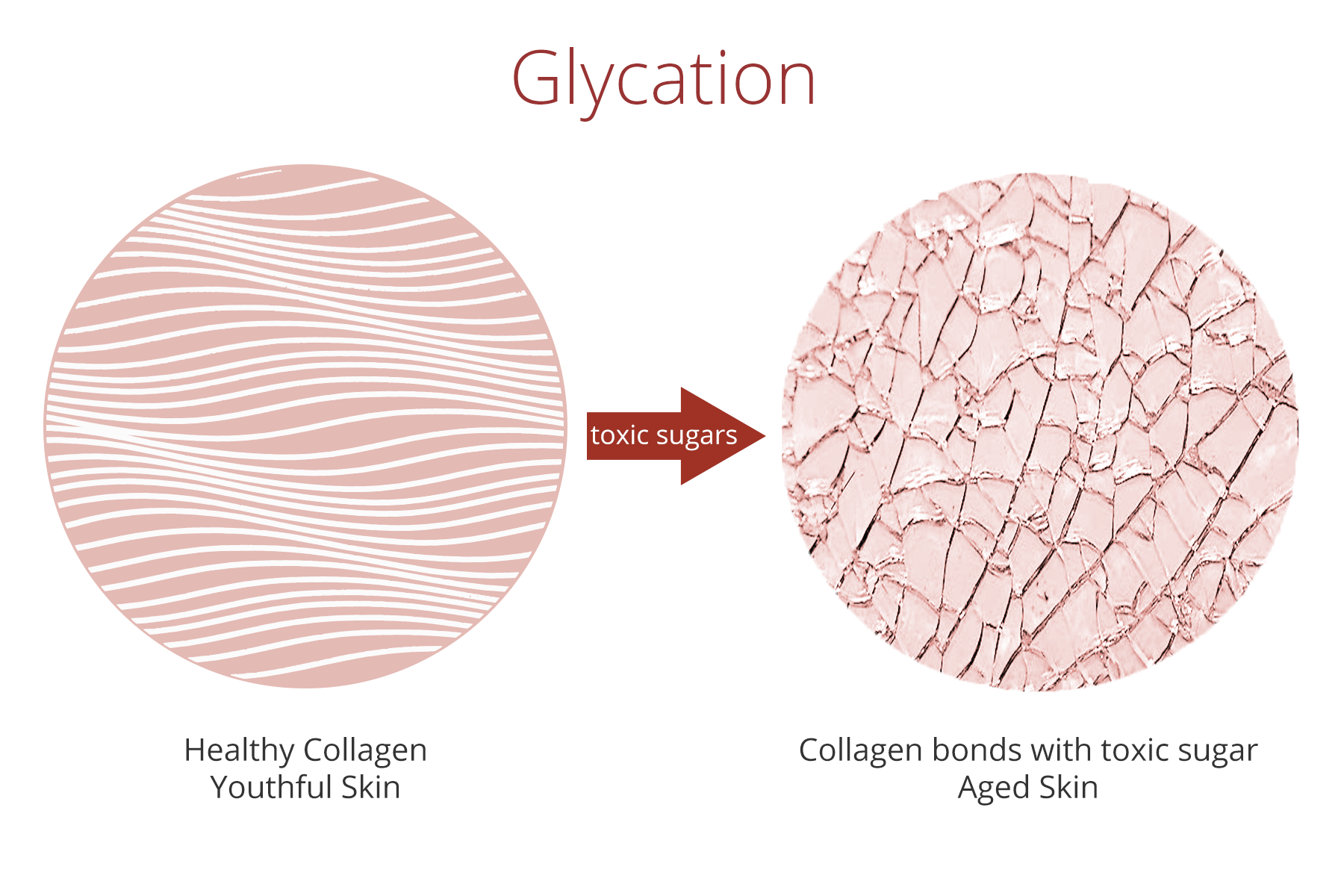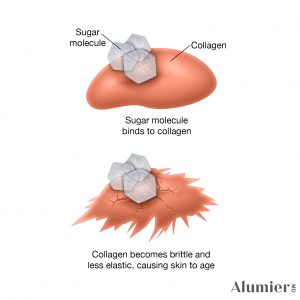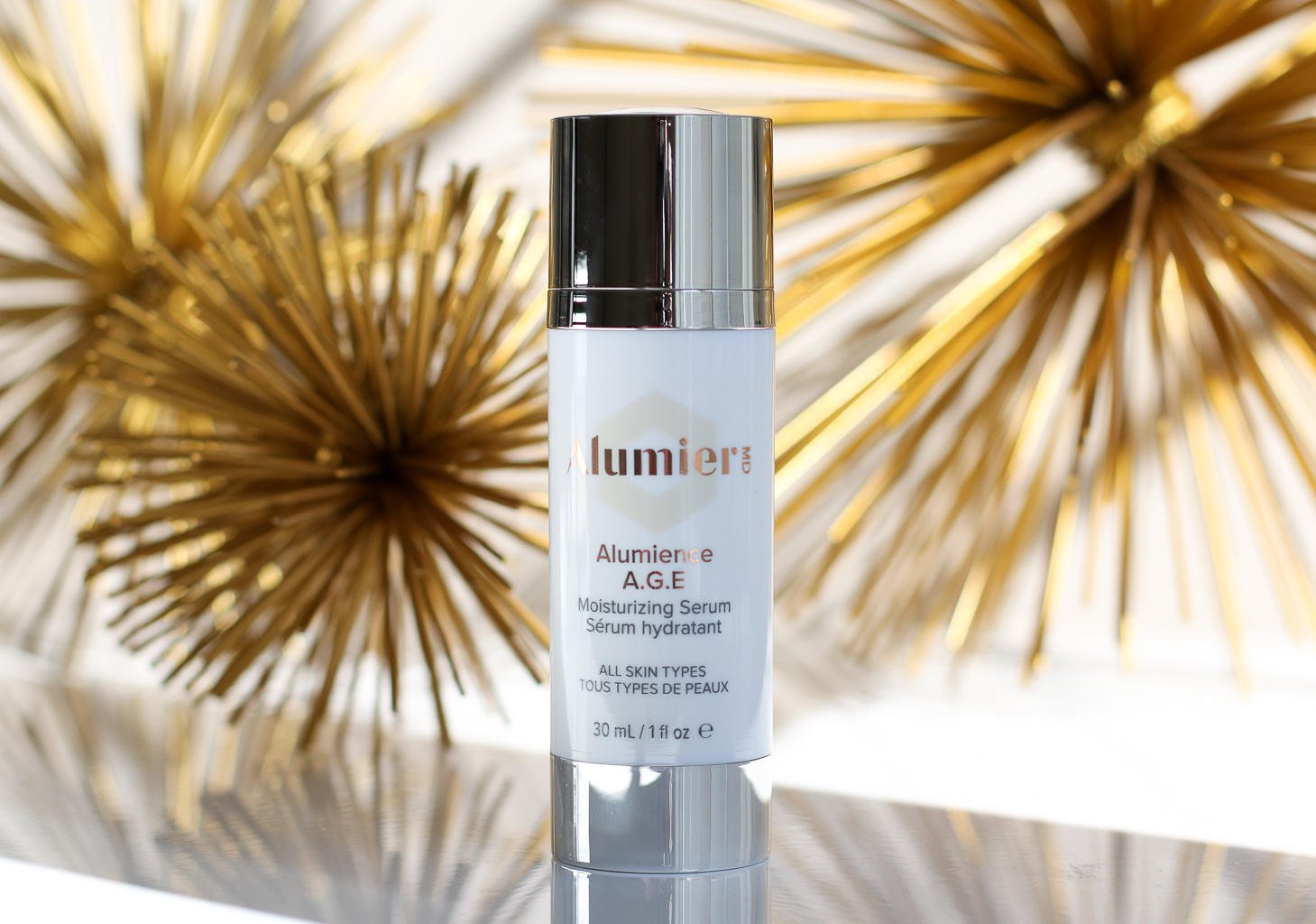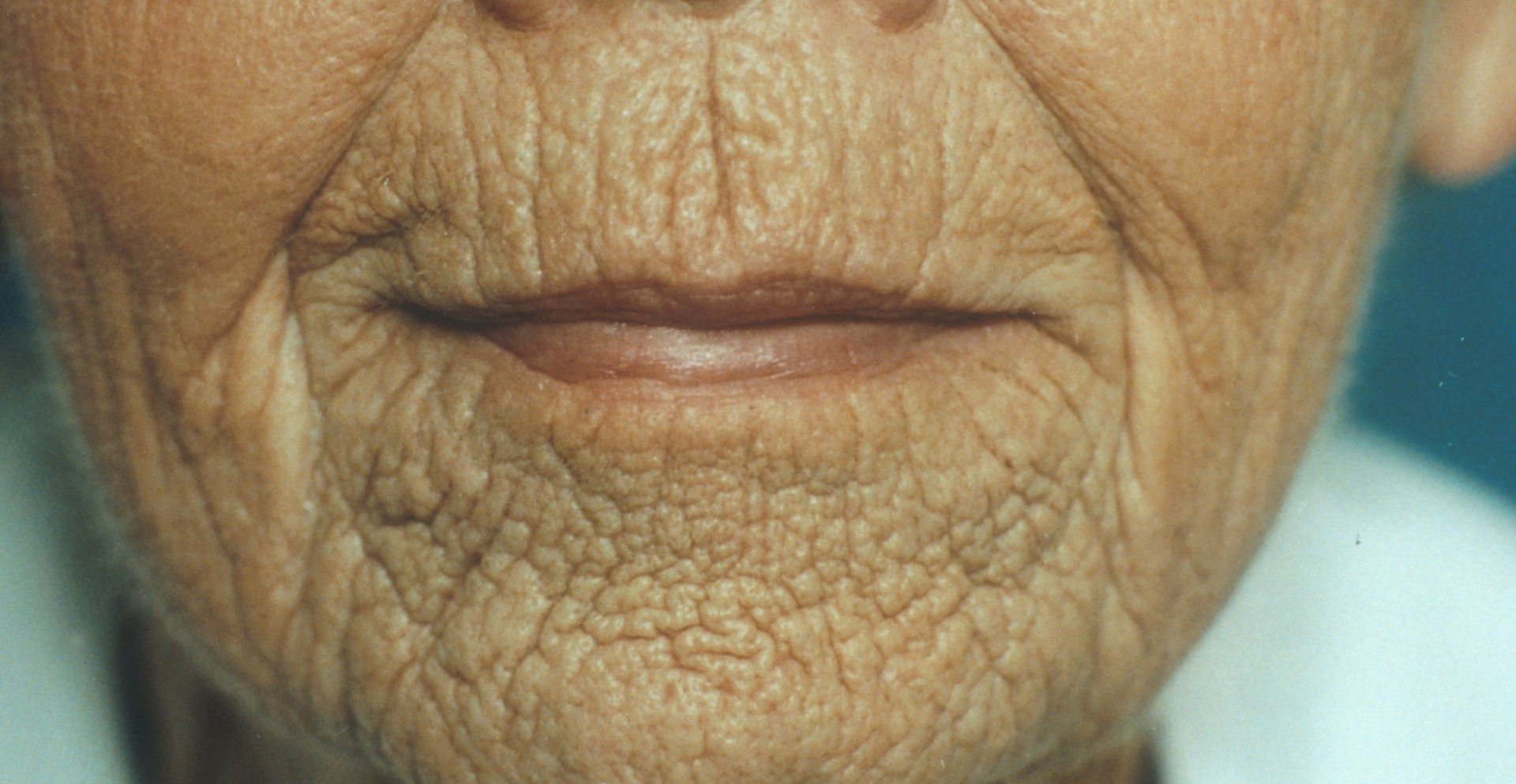So what causes glycation? In simple terms glycation is caused when sugar molecules attach to collagen in the skin.
 When we eat food, the body breaks down carbohydrates into sugars like glucose and fructose, which are the essential fuel for cells and energy metabolism. Glycation is the non-enzymatic reaction between sugars, such as glucose, and proteins, lipids or nucleic acids. This process was first described by food chemist Maillard in 1912 and its involvement in food browning during thermal processing was discovered by Hodge 50 years later. Since then the involvement of glycation in various pathologies of the human body has been an intensive field of research.
When we eat food, the body breaks down carbohydrates into sugars like glucose and fructose, which are the essential fuel for cells and energy metabolism. Glycation is the non-enzymatic reaction between sugars, such as glucose, and proteins, lipids or nucleic acids. This process was first described by food chemist Maillard in 1912 and its involvement in food browning during thermal processing was discovered by Hodge 50 years later. Since then the involvement of glycation in various pathologies of the human body has been an intensive field of research.
Advanced glycation end prodcuts (AGEs) are proteins or lipids that have become glycated as a result of exposure to sugars, Studies on the contribution of glycation to diseases have primarily focused on its relationship to diabetes and its complications. However, even at normal glucose levels, some degree of glycation occurs and the damage thereby accumulates slowly over time. In addition to diabetes, AGEs have been linked to other diseases such as cataracts, Alzheimers, dialysis-related amyloidosis, atherosclerosis and Parkinson’s as well as physiological ageing.
AGEs can be formed firectly in the body or be exogenously ingested by eating broiled, fried or barbecued food. Reactive oxygen species (ROSs) accelerate AGE formation. For healthy people with normal blood glucose levels, glycation happens gradually and slowly over a lifetime. Diet and lifestyle choices can affect glycation. In fact, yellowing of skin often seen prematurely in smokers is a sign of glycation. Smoking reduces antioxidants in the skin so there is little antioxidant reserve to slow glycation. AGE formation is increased with age, smoking, poor diet and possibly UV exposure.
 Over the last few years, there has been increased interest in the role of AGEs in skin ageing. Glycation contributes to the visible signs of ageing, including fine lines, wrinkles, discolouration and skin thinning.
Over the last few years, there has been increased interest in the role of AGEs in skin ageing. Glycation contributes to the visible signs of ageing, including fine lines, wrinkles, discolouration and skin thinning.AGEs are formed intracellularly and extracellularly. Many intracellular components can be affected by glycation with detrimental effects on their function including cytoskeleton proteins, enzymes, DNA and lipids. Cytoskeletal proteins are important in providing stability of the cytoskeleton and are crucially involved in numerous cellular functions such as migration and cellular division. Intracellular glycation in the skin adversely affects keratinocyte and fibroblast function.
Glycation also affects extracellular matrix (ECM) proteins like collagen and elastin negatively affecting their biomechanics. Glycated collagen is stiff and less flexible. This altered collagen also resists degradation by matrix metalloproteinases (MMPs) therefore, inhibiting its removal and replacement by newly synthesised and functional collagen. The appearance of glycated collagen can be first seen at the age of 20. It accumulates with a rate of about 3.7% per year reaching a 30-50% increase by age 80. The external signs of glycation are usually seen by age 35 when the body becomes less resilient and produces less collagen.
AGEs not only exerts their deleterious actions directly but also indirectly through their interaction with specific cell surface receptors called receptor for AGEs (RAGE).
When AGEs bind to RAGE, it initiates a cascade of signals negatively influencing cell cycle and proliferation, gene expression, inflammation and ECM protein synthesis. Keratinocytes, fibroblasts, dendritic cells and to a less extent endothelial cells and lymphocytes express RAGE. RAGE activation can directly induce oxidative stress and inflammation.
A 2013 study by Leiden University Medical Centre and Unilever R&D identified, for the first time, a relationship between peoples blood sugar levels and their perceived facial age. The study found that people aged 50 to 70 with high random blood sugar levels consistently looked older than those with lower blood sugar levels. The results demonstrated that for every 1mmol/L increase in blood sugar, perceived age increased by five months. The study also found that the perceived facial age of diabetics, who have had long term exposure to elevated blood sugar levels, looked older than non-diabetics. These results remained significant even after taking into account other factors known to influence facial ageing such as smoking, sun exposure and BMI (body mass index).
Since oxidation steps are involved in the formation of many AGEs, antioxidants may have antiglycating abilities. In addition to maintaining a healthy diet low in simple sugars and high in antioxidants, there are now skin care ingredients that specifically target glycation and AGEs.
For example, the AlumierMD Alumience A.G.E is an exclusive formulation that reduces the visible signs of ageing caused by free radicals, pollution and advanced glycation end products (AGEs). It contains Arginine which is an amino acid that has a dual action both preventing glycation and reducing AGEs. It also contains a very interesting ingredient called Ameliox. Ameliox (Carosine, Silymarin and Vitamin E) is a naturally occurring dipeptide combined with 2 antioxidants that together decrease the formation of AGEs. This ingredient attaches to glucose to prevent it attaching to the collagen in the skin.
Alumience A.G.E is the ultimate shield for daily protection.
 This post includes information and evidence from an AlumierMD scientific paper.
This post includes information and evidence from an AlumierMD scientific paper.